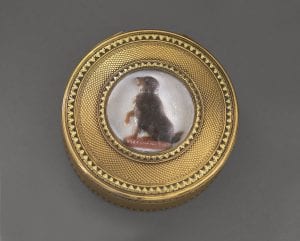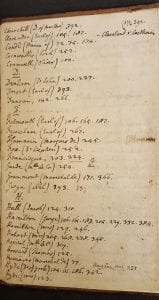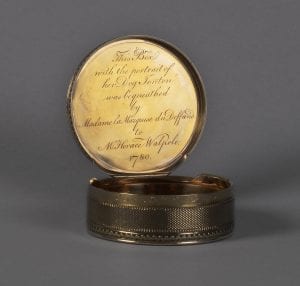Choice 18: Mary Berry’s Sketch Book
by Wilmarth S. Lewis
“Walpole wrote Lady Ossory, 11 October 1788:
“If I have picked up no recent anecdotes on our common, I have made a much more, to me, precious acquisition. It is the acquaintance of two young ladies of the name of Berry, whom I first saw last winter, and who accidentally took a house here with their father for this season. Their story is singular enough to entertain you. The grandfather, a Scot, had a large estate in his own country; £5000 a year, it is said; and a circumstance I shall tell you, makes it probable. The eldest son married for love a woman with no fortune. The old man was enraged and would not see him. The wife died and left these two young ladies. Their grandfather wished for an heir male, and pressed the widower to remarry, but could not prevail—the son declaring he would consecrate himself to his daughters and their education. The old man did not break with him again, but much worse, totally disinherited him, and left all to his second son, who very handsomely gave up £800 a year to his elder brother. Mr Berry has since carried his daughters for two or three years to France and Italy, and they are returned the best informed and the most perfect creatures I ever saw at their age. They are exceedingly sensible, entirely natural and unaffected, frank, and being qualified to talk on any subject, nothing is so easy and agreeable as their conversation, nor more apposite than their answers and observations. The eldest, I discovered by chance, understands Latin, and is a perfect Frenchwoman in her language. The younger draws charmingly, and has copied admirably Lady Di’s gypsies, which I lent her, though the first time of her attempting colours.
“They are of pleasing figures; Mary, the eldest, sweet, with fine dark eyes, that are very lively when she speaks, with a symmetry of face that is the more interesting from being pale. Agnes, the younger, has an agreeable sensible countenance, hardly to be called handsome, but almost. She is less animated than Mary but seems out of deference to her sister to speak seldomer, for they dote on each other, and Mary is always praising her sister’s talents. I must even tell you, Madam, that they dress within the bounds of fashion, though fashionably; but without the excrescences and balconies with which modern hoydens overwhelm and barricado their persons. In short, good sense, information, simplicity and ease characterize the Berrys—and this is not particularly mine, who am apt to be prejudiced, but the universal voice of all that know them. The first night I met them, I would not be acquainted with them, having heard so much in their praise, that I concluded they would be all pretensions. The second time, in a very small company, I sat next to Mary, and found her an angel, inside and out. Now, I don’t know which I like best, except Mary’s face, which is formed for a sentimental novel but is ten times fitter for a fifty times better thing, genteel comedy.
“This delightful family comes to me almost every Sunday evening, as our region is too proclamatory to play at cards on the seventh day — I do not care a straw for cards, but I do disapprove of this partiality to the youngest child of the week, while the other poor six days are treated as if they had no souls to be saved.
“I forgot to tell you that Mr Berry is a little merry man with a round face, and you would not suspect him of so much feeling and attachment. I make no excuse for such minute details, for if your Ladyship insists on hearing the humours of my district, you must for once indulge me in sending you two pearls that I found in my path.
“The Berrys were aged twenty-four and twenty-three when they met Walpole. He was seventy. Pinkerton reports a rumour, which Macaulay, Thackeray, and Cunningham later spread, that before his death Walpole offered marriage to both Berrys in succession; but what actually took place is made clear by Charles Fulke Greville in his Journal of the Reign of Queen Victoria, 1832-1852. He called on Miss Berry one day in 1843 ‘and found her in great indignation at [T. Crofton] Croker’s recent article in the “Quarterly” upon the series just published of Lord Orford’s letters to Mann, angry on his account and on her own. Croker says, what has been often reported, that Lord Orford offered to marry Mary Berry, and on her refusal, to marry Agnes. She says it is altogether false. Walpole never thought of marrying Agnes, and what passed with regard to herself was this: The Duchess of Gloucester was very jealous of his intimacy with the Berrys, though she treated them with civility. At last her natural impetuosity broke out, and she said to him, “Do you mean to marry Miss Berry or do you not?” To which he replied, “That is as Miss Berry herself pleases”; and that, as I understood her, is all that passed about it.’ ‘Let me repeat to both,’ Walpole wrote 26 February 1791, ‘that distance of place and time can make no alteration in my friendship; It grew from esteem for your characters and understandings and tempers, and became affection from your good-natured attentions to me, where there is so vast a disproportion in our ages.’ It was a thoroughly common-sensical relationship on both sides. Walpole and the Berrys delighted in each other’s company, and that was that.”
Lewis describes the kind of content Walpole’s letters to the Berrys included: “The subjects he wrote about to the Berrys are much the same as those in his other intimate correspondences–great names and events and entertaining trivialities–but to the Berrys there is more neighbourhood gossip and more of his own hopes and fears.”
“When the Berrys returned from their long European sojourn in 1791, they moved into Little Strawberry Hill 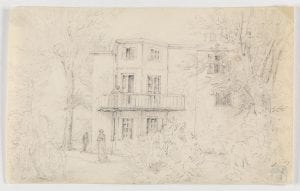 and were the old man’s constant companions until he died six years later. This ideal arrangement for both sides developed a somewhat disturbed undercurrent. The young women were not free from restlessness and Mary had to conduct her furtive love-affair with General O’Hara, which came to naught, in fear of Walpole’s discovering it. I acquired four of Mrs. Damer’s small notebooks, 1791-97, in the second Waller Sale. They are addressed to Mary Berry although not by name. The sort of thing Mrs Damer wrote is:
and were the old man’s constant companions until he died six years later. This ideal arrangement for both sides developed a somewhat disturbed undercurrent. The young women were not free from restlessness and Mary had to conduct her furtive love-affair with General O’Hara, which came to naught, in fear of Walpole’s discovering it. I acquired four of Mrs. Damer’s small notebooks, 1791-97, in the second Waller Sale. They are addressed to Mary Berry although not by name. The sort of thing Mrs Damer wrote is:
“I love your dignity as much as my own and enter into every word you said about him this morn–you understand me–You looked so low, so uncomfortable and so tired tonight, that tho’ it is late I cannot go to bed in peace without telling you how much I felt and regretted it–for tho’ I can seldom have the comfort of relieving, I must ever share your disquiets–perhaps, nay, very likely, it proceeded from nothing particular. I know too well the numberless, nameless things that smart, and agonize a mind ‘too painfully alive all o’er.’ I know that there is but one relief, which is the sympathizing bosom of some kindred being–that being exists both to you and to me, and tho’ not always mutually within our reach–let us bless God . . . suffer, and be thankful.
“Twenty years earlier Mrs Damer had been the subject of ‘A Sapphick Epistle’ that made her partiality to her own sex clear. Strephon was perfectly safe with her, but Chloe was not.”
Lewis recounts Anne Damer’s husband’s suicide and her attitude towards Walpole, and he outlines the jealousy of Lady Mary Churchill and the Duchess of Gloucester towards the Berry sisters.
“The object I am saving in this Choice is a modest one, Mary Berry’s sketch book. We have at Farmington only two other objects that belonged to a black lace parasol that came from her relations the Munro Ferguson family of Raith and a beautiful gold repeating watch that was made for Walpole in 1741 and given by him to her, as is noted on its back. We also have a miniature of her when young that I keep with them, but they are not as close to her as her rather shabby sketch book. It is oblong, covered with striped Italian paper in green, red, and low, and on it she wrote
modest one, Mary Berry’s sketch book. We have at Farmington only two other objects that belonged to a black lace parasol that came from her relations the Munro Ferguson family of Raith and a beautiful gold repeating watch that was made for Walpole in 1741 and given by him to her, as is noted on its back. We also have a miniature of her when young that I keep with them, but they are not as close to her as her rather shabby sketch book. It is oblong, covered with striped Italian paper in green, red, and low, and on it she wrote
MB
1790
Pisa
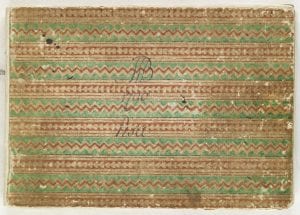
“Inside is her bookticket, a cluster of strawberry blossoms, leaves, and fruit between her name and Inter Folio Fructus. I bought it from Sotheran in 1923. 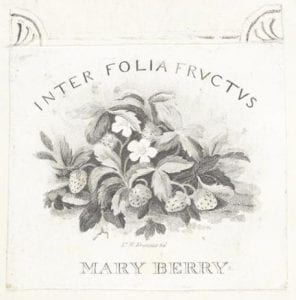 The first drawing is a street, “Pisa 1791.”
The first drawing is a street, “Pisa 1791.” 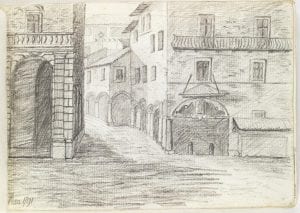 Miss Berry was happier with buildings than with trees, which she drew with spectacular unsuccess. Village churches were her forte and there are two views of Goodwood that delighted Walpole because of his affection for the Richmonds–his large correspondence with whom has so unfortunately disappeared. Miss Berry’s sketch book is markedly inferior to Agnes’s, which is also at Farmington, but one feels it is closer to Walpole. ‘You are learning perspective to take views; I am glad,’ he wrote Mary, ‘can one have too many resources in one’s self? Internal armour is more necessary to your sex than weapons to ours. You have neither professions nor politics nor ways of getting money like men, in any of which, whether successful or not, they are employed. Scandal and cards you will both always hate and despise as much as you do now; and though I shall not flatter Mary so much as to suppose she will ever equal the extraordinary talent of Agnes in painting, yet as Mary like the scriptural Martha is occupied in many things, she is quite in the right to add the pencil to her other amusements.’
Miss Berry was happier with buildings than with trees, which she drew with spectacular unsuccess. Village churches were her forte and there are two views of Goodwood that delighted Walpole because of his affection for the Richmonds–his large correspondence with whom has so unfortunately disappeared. Miss Berry’s sketch book is markedly inferior to Agnes’s, which is also at Farmington, but one feels it is closer to Walpole. ‘You are learning perspective to take views; I am glad,’ he wrote Mary, ‘can one have too many resources in one’s self? Internal armour is more necessary to your sex than weapons to ours. You have neither professions nor politics nor ways of getting money like men, in any of which, whether successful or not, they are employed. Scandal and cards you will both always hate and despise as much as you do now; and though I shall not flatter Mary so much as to suppose she will ever equal the extraordinary talent of Agnes in painting, yet as Mary like the scriptural Martha is occupied in many things, she is quite in the right to add the pencil to her other amusements.’
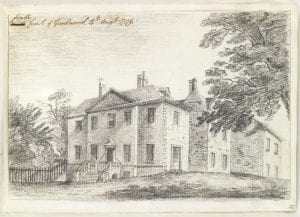
“Our chief interest in Miss Berry’s later life is what she did for Walpole’s reputation. It was not forgotten that she had been the closest friend of his declining years and, allegedly, might have been his wife. She was at the center of the talk that began when his will was read. It was said that he had left too much to the Duchess of Gloucester, too little to Kirgate, and nothing at all, Pinkerton objected, to Pinkerton; he was blamed for the death of Chatterton; he had been hateful to Mme du Deffand; J.W. Croker and Lord Liverpool agreed that he was ‘as bad a man as ever lived’ because he had, they said, poisoned history at its source. Byron came to his rescue with equal extravagance in the Preface to Marino Faliero, 1821: ‘It is the fashion to underrate Horace Walpole; firstly, because he was a nobleman, and secondly, because he was a gentleman, but to say nothing of the composition of his incomparable letters, and of the Castle of Otranto, he is the “Ultimus Romanorum,” the father . . . of the first romance and of the last tragedy in our language, and surely worthy of a higher place than any living writer, be he who may.’
“Twelve years later in 1833 came Macaulay’s attach on Walpole in the Edinburgh Review. Macaulay, rising thirty-three, boasted to his sister, ‘I have laid it on Walpole so unsparingly that I shall not be surprised if Miss Berry should cut me.’ Two or three weeks later, however, he is off to Miss Berry’s soirée. ‘I do not know whether I told you that she resented my article on Horace Walpole so much that Sir Stratford Canning advised me not to go near her . . . You know that in Vivian Grey she is called Miss Otranto. I always expected that my article would put her into a passion, and I was not mistaken; but she has come round again, and sent me a most pressing and kind invitation the other day.’
“Macaulay’s essay has had more influence on Walpole’s reputation than all other comments on him combined. It is a caricature, but as in all good caricatures the victim is recognizable. Although every page contains untrue statements, there does emerge a distorted likeness. Miss Berry answered it seven years later in Bentley’s edition of Walpole’s Letters. Macaulay’s picture of Walpole’s character, she said, was ‘entirely and offensively unlike the original.’ She dismissed the untrue charges one by one, ending with the most serious, Walpole’s alleged coldness of heart. She had decided to publish his letters to her and her sister to give proof ‘that the warmth of his feelings, and his capacity for sincere affection, continued unenfeebled by age.’
“There is no record of Macaulay and Miss berry dining amicably after her defence, but there is at Farmington a statement not without interest written by George Bentley, the son of Miss Berry’s publisher. It was given me by our hostess at Upton, Mrs Richard Bentley. ‘Miss Berry,’ George Bentley wrote, ‘had inoculated [the first Richard Bentley] with a feeling of affection for Walpole’s character, and he could never bear to hear him ill spoken of . . . It was his great wish that his letters should be collected and chronologically arranged.
“‘Macaulay was consulted on the subject. His character of Walpole is so well known, but Macaulay’s opinion had modified in his later days as he confessed to Miss Berry, and as Miss Berry told my father.'”
Lewis, Wilmarth S. Rescuing Horace Walpole. New Haven and London: Yale University Press, 1978.
To see the full chapter from Rescuing Horace Walpole called “Choice 18: Mary Berry’s Sketch Book” download or expand the link here:
N.B. According to the catalog record, the Damer notebooks represent a “Manuscript, in a single hand, of a collection of excerpts of letters, in four volumes, from Mary Berry to Damer, transcribed and edited by Damer.”
 Loading...
Loading...

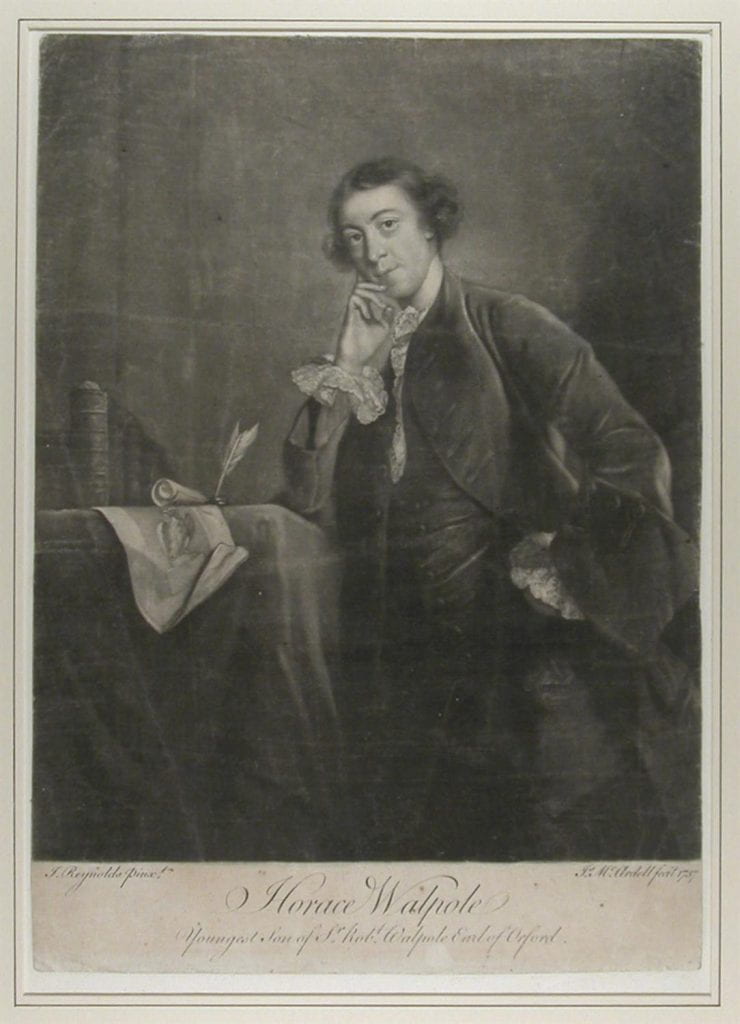

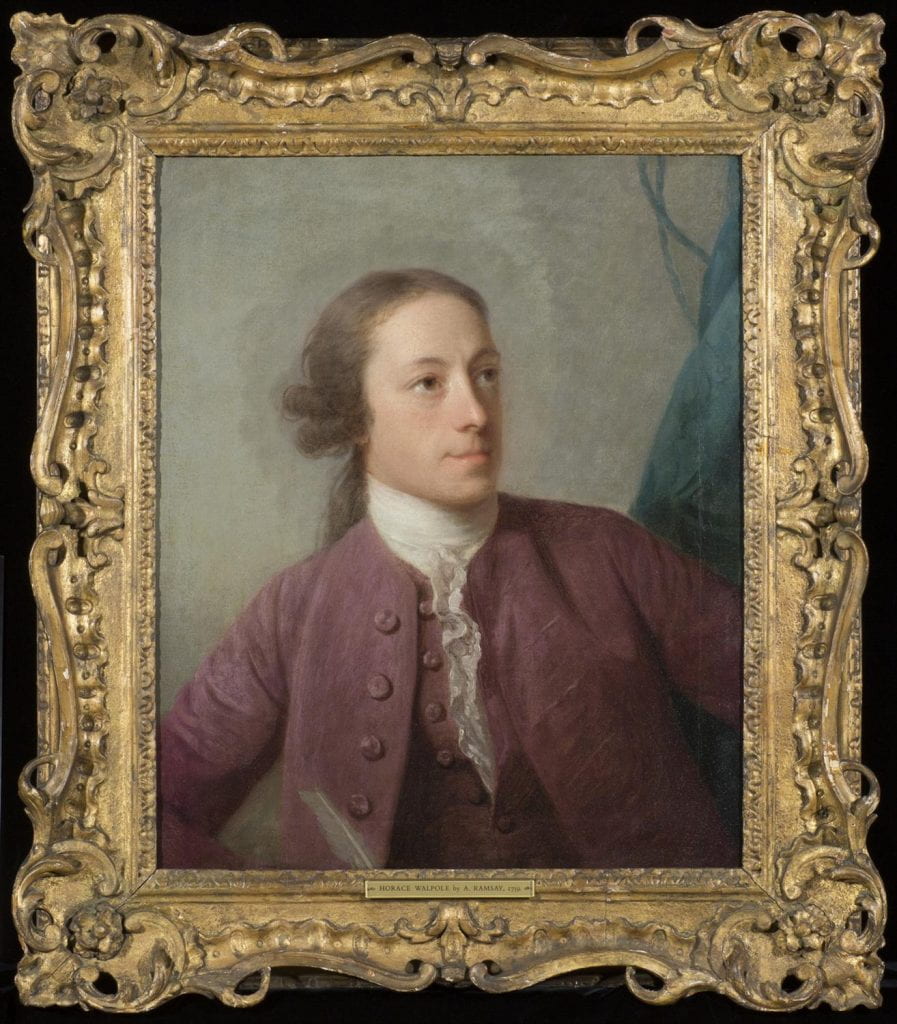
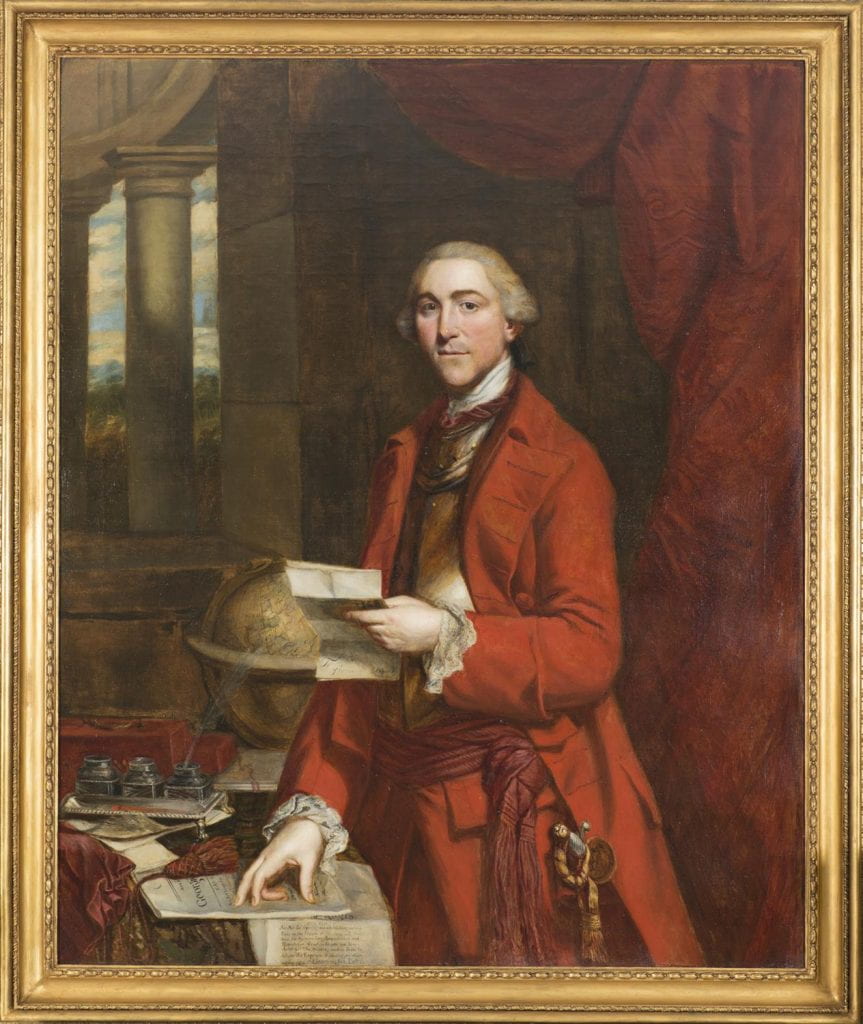
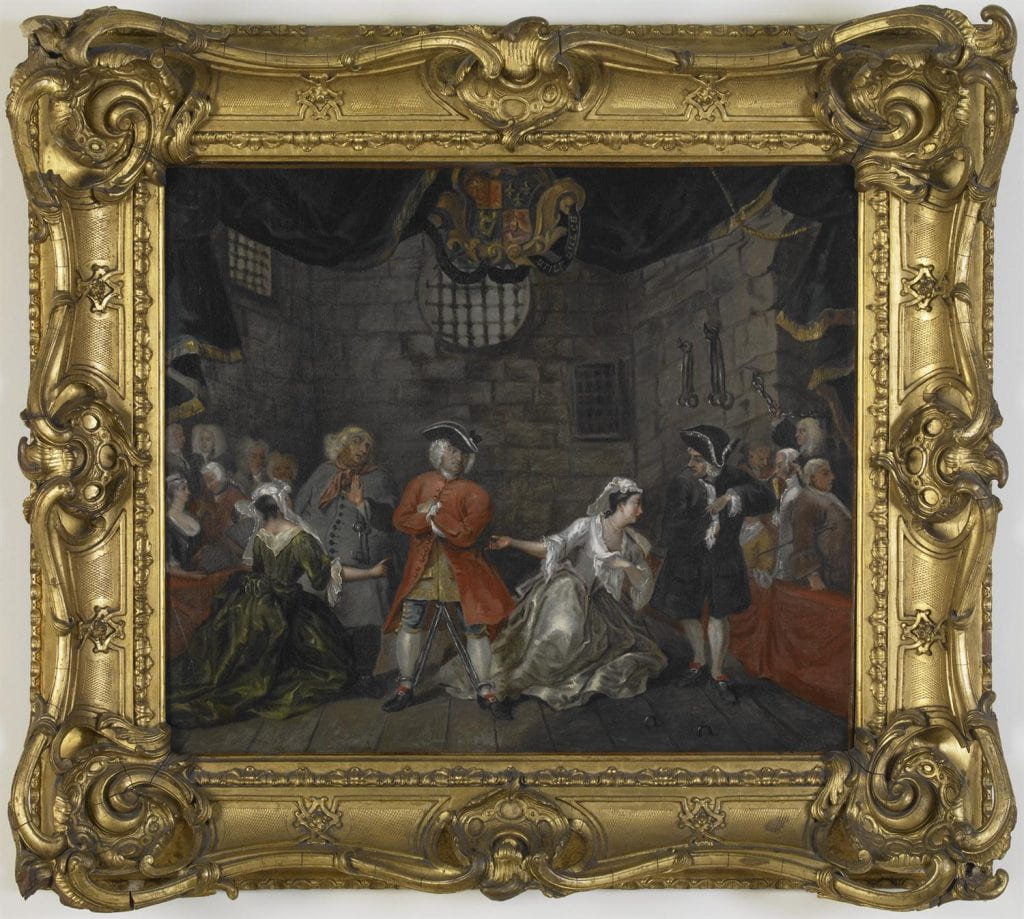
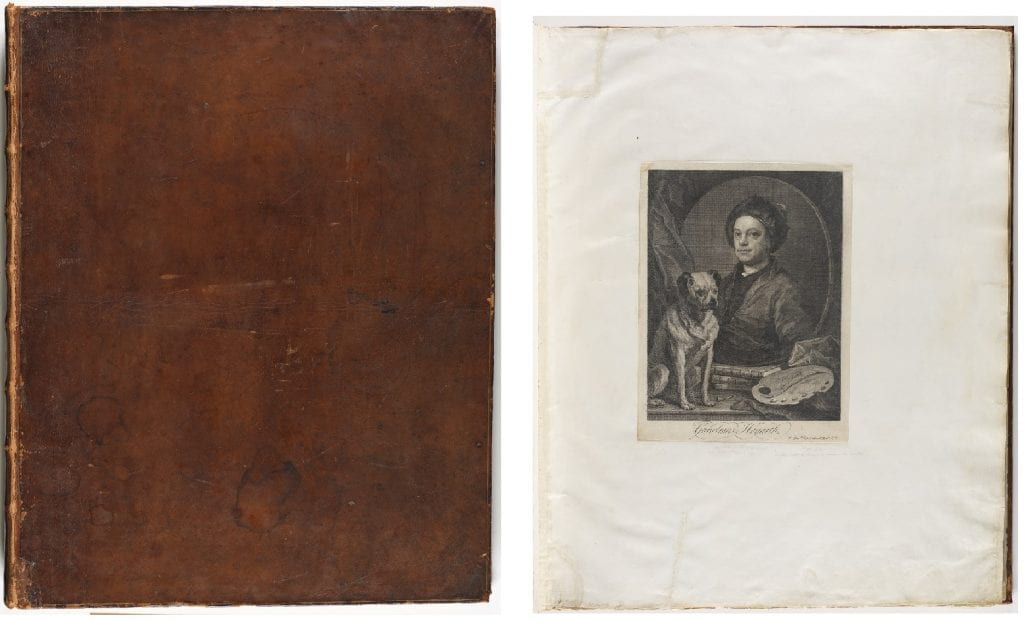

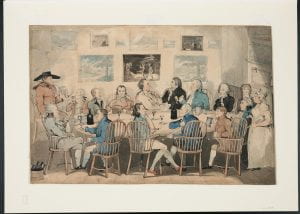
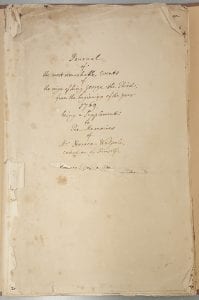
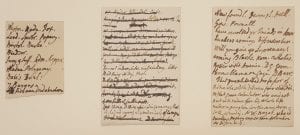
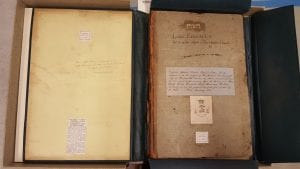



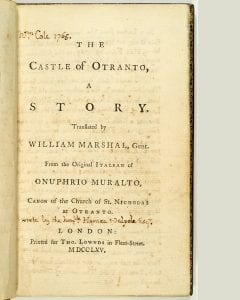
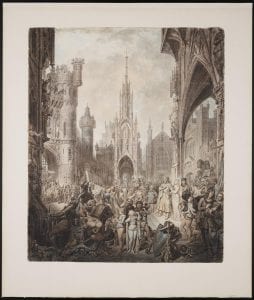
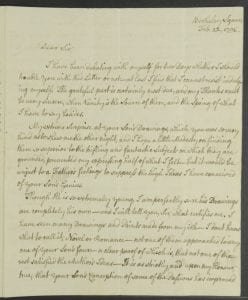









![Duchesse de Choisel, and Madame la Marquise Du Deffand [graphic] : (from the original formerly at Strawberry Hill) / M. Carmontel, del. ; W. Greatbach sculp.](https://campuspress.yale.edu/walpole300/files/2018/07/Mme-du-deffand-29lufgd-199x300.jpg)
